When investing in an industrial oil-fired boiler, many buyers focus on the initial purchase price—but fail to consider the full spectrum of operating, maintenance, and lifecycle costs. While oil-fired systems are known for their high energy density, quick response, and reliability, ignoring long-term expenses can lead to budget overruns, low ROI, or unexpected downtime. Understanding both upfront and ongoing costs is essential to making a smart, financially sound boiler investment.
The upfront costs of an industrial oil-fired boiler include the equipment price, installation, foundation work, auxiliary systems (burners, pumps, chimneys), and compliance-related fees. Long-term costs include fuel expenses, preventive maintenance, spare parts, efficiency losses, emissions compliance, and eventual system upgrades or replacement. Over a typical 15–25 year lifespan, operational and fuel costs often exceed the initial capital investment, making lifecycle analysis crucial for informed purchasing decisions.
Below is a breakdown of the cost structure you need to consider when evaluating an oil-fired boiler investment.
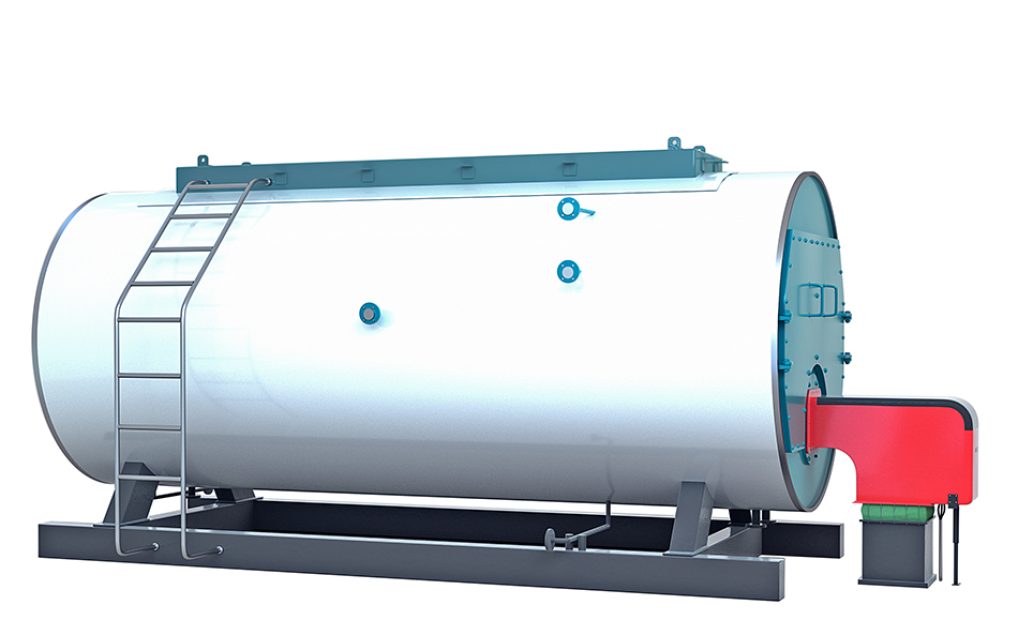
What Are the Typical Upfront Costs of Purchasing and Installing an Oil-Fired Boiler?
Switching to or installing an oil-fired boiler can provide efficient heating for industrial, commercial, and residential applications—but it also comes with substantial upfront costs. These include not just the boiler itself, but also auxiliary components like oil tanks, burners, controls, piping, chimney upgrades, and installation labor. For buyers and engineers planning a new system or replacing an aging one, understanding these cost drivers is essential for budgeting and selecting the most suitable unit. Total cost varies significantly based on size, pressure rating, application, and site-specific requirements.
The typical upfront cost of purchasing and installing an oil-fired boiler ranges from $4,000 to $25,000 for residential and small commercial systems, and from $50,000 to over $250,000 for larger industrial units. These figures include the boiler unit, oil burner, fuel tank, flue system, and full installation. Additional costs such as permits, plumbing, electrical work, and site modifications can add 10–30% to the base price. System complexity, thermal output (BTU or kW), efficiency rating, and controls integration also influence the final investment.
The right boiler is an investment—not just in heating, but in long-term performance, reliability, and operational savings.
The upfront cost of an oil-fired boiler includes more than just the boiler unit—it also involves installation and auxiliary components.True
Piping, oil tanks, burner systems, controls, and labor all contribute significantly to the total cost.
💰 Typical Cost Breakdown for Oil-Fired Boiler Installation
| Component/Service | Residential/Light Commercial ($) | Industrial (2–10 TPH) ($) |
|---|---|---|
| Boiler Unit (incl. burner) | $3,000 – $10,000 | $35,000 – $150,000 |
| Fuel Storage Tank (500–5,000 L) | $1,000 – $5,000 | $10,000 – $30,000 |
| Flue/Chimney System Upgrade | $500 – $3,000 | $5,000 – $15,000 |
| Piping, Valves, Fittings | $800 – $3,000 | $10,000 – $30,000 |
| Controls & Safety Devices | $500 – $2,000 | $7,000 – $20,000 |
| Installation Labor | $2,000 – $5,000 | $15,000 – $50,000 |
| Permits/Compliance | $200 – $1,000 | $1,000 – $5,000 |
Total Typical Range:
Residential/Commercial: $7,000 – $25,000
Industrial Scale: $50,000 – $250,000+
Installing an oil-fired boiler usually requires flue upgrades and safety system integration, increasing total cost.True
New systems must comply with local codes for exhaust, emissions, and safety shutdown protocols.
🔧 Factors That Influence Upfront Costs
| Factor | Description | Impact on Cost |
|---|---|---|
| Boiler Size (Output Rating) | Higher BTU/hr or TPH → larger, more expensive units | Major |
| Fuel Storage Volume | Onsite storage capacity for oil | Moderate |
| Efficiency Rating | High-efficiency condensing boilers cost more upfront | Moderate |
| Boiler Type | Fire tube, water tube, condensing, low/high pressure | Major |
| Control System Complexity | PLC/SCADA integration, oxygen trim, modulating burner | Moderate–High |
| Site Conditions | Retrofitting vs. new installation | High (retrofit) |
| Permit & Regulatory Compliance | Depends on location and emissions limits | Variable |
📊 Example Scenarios
| Application | Boiler Size | Estimated Installed Cost | Notes |
|---|---|---|---|
| Home heating | 80,000 BTU/hr | $6,000 – $9,000 | Basic hot water boiler with tank |
| Small commercial office | 250,000 BTU/hr | $12,000 – $20,000 | With 1,000L tank and digital controls |
| Mid-size factory | 1.5 TPH | $65,000 – $110,000 | Fire tube with mechanical modulation |
| Large industrial plant | 5 TPH | $160,000 – $250,000 | Water tube with advanced control suite |
These figures can vary by region, manufacturer, installation contractor, and regulatory environment.
High-efficiency oil-fired boilers cost more initially but can yield long-term fuel savings.True
Condensing and modulating designs can cut fuel use by 10–20%, offsetting higher upfront costs over time.
📋 Additional Cost Considerations
| Item | Estimated Cost Impact | Required? |
|---|---|---|
| Oil Pump/Transfer System | $1,000 – $5,000 (industrial) | Yes (large tanks) |
| Remote Monitoring Controls | $1,500 – $8,000 | Optional |
| Thermal Insulation | $500 – $3,000 | Yes |
| Commissioning & Tuning | $1,000 – $3,500 | Yes |
| Training & Documentation | $500 – $2,000 | Often required |
Industrial users should also budget for annual inspection, spare parts, and extended warranties.
Summary
The upfront cost of purchasing and installing an oil-fired boiler depends heavily on system size, site conditions, fuel storage, efficiency goals, and integration needs. While small systems may cost under $10,000 installed, industrial installations can exceed $250,000. A well-specified system with appropriate burner and control configuration ensures efficient, compliant operation—and reduces fuel waste for years to come. In combustion heating, upfront investment is the foundation of long-term performance.
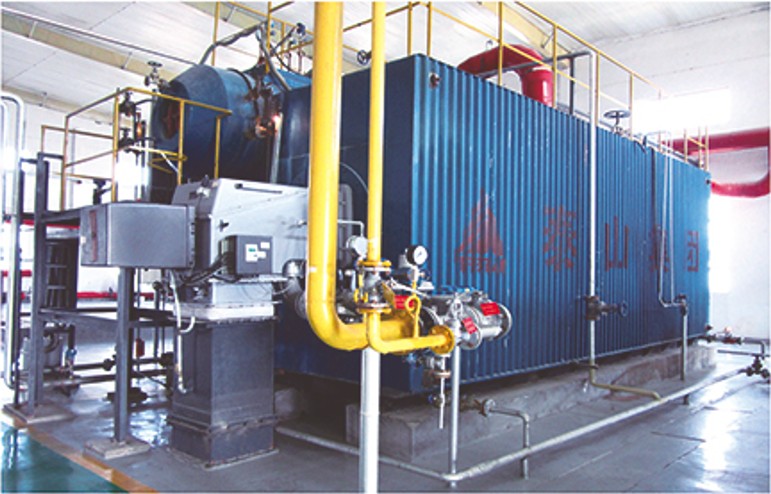
What Auxiliary Equipment and System Components Add to Capital Expenses?
When budgeting for a new boiler system, focusing solely on the boiler unit itself significantly underestimates the total investment. The real capital cost includes a wide range of auxiliary equipment and system components that are essential for safe, efficient, and reliable operation. From fuel handling and water treatment to control systems, pumps, and stack components, each piece adds to the total installation cost. In many projects, these supporting systems account for 30–70% of total capital expenditures depending on the application and level of automation.
Auxiliary equipment and system components add to capital expenses by providing the critical support functions required for boiler safety, fuel delivery, water conditioning, emissions control, and performance monitoring. These include fuel storage tanks, water treatment units, economizers, air compressors, deaerators, pumps, blowdown systems, and control panels. Together, they ensure that the boiler operates at peak efficiency, meets regulatory requirements, and maintains long-term reliability. While the boiler may be the centerpiece, it is these components that complete the system—and collectively, they often exceed the base cost of the boiler itself.
Capital planning for a boiler system must consider the entire thermal ecosystem—not just the combustion chamber.
Auxiliary equipment for boilers can significantly increase the total capital cost beyond the base boiler unit price.True
Supporting components like tanks, pumps, water treatment systems, and controls are essential and often comprise a major portion of project costs.
🔧 Key Auxiliary Components That Add to Capital Expenses
| Component | Purpose | Typical Cost Range (USD) |
|---|---|---|
| Fuel Storage Tanks | Stores oil, gas, biomass, or RDF fuel | $1,000 – $30,000+ |
| Fuel Pump/Transfer System | Moves fuel from storage to burner | $2,000 – $10,000 |
| Feedwater System | Pumps and preheats water into the boiler | $3,000 – $50,000 |
| Deaerator | Removes oxygen from feedwater to prevent corrosion | $10,000 – $60,000 |
| Water Softener/RO System | Prevents scale and fouling on heat transfer surfaces | $5,000 – $50,000 |
| Economizer (Heat Recovery) | Recovers flue gas heat to preheat feedwater | $8,000 – $80,000 |
| Blowdown Separator | Safely handles water discharge under pressure | $3,000 – $20,000 |
| Condensate Return Tank | Collects and recycles steam condensate | $2,000 – $15,000 |
| Stack/Chimney System | Safely vents flue gases | $5,000 – $40,000 |
| Flue Gas Analyzer/Sensors | Monitors O₂, CO, NOₓ for combustion optimization | $2,000 – $15,000 |
| Control Panel/PLC System | Manages boiler operation and interlocks | $5,000 – $35,000 |
| Air Compressor/Blower | Supplies combustion and atomizing air | $3,000 – $25,000 |
Economizers and water softeners are optional and do not impact overall system efficiency.False
Both are critical components—economizers improve thermal efficiency, and softeners prevent scale buildup that reduces heat transfer.
📊 Example: Capital Breakdown for a 3 TPH Oil-Fired Boiler
| Cost Element | Approximate Cost (USD) | Share of Total (%) |
|---|---|---|
| Boiler Unit + Burner | $70,000 | ~40% |
| Fuel Tank + Transfer System | $20,000 | ~11% |
| Feedwater Pumps + Deaerator | $18,000 | ~10% |
| Water Softening System | $12,000 | ~7% |
| Economizer | $15,000 | ~9% |
| Control & Instrumentation | $12,000 | ~7% |
| Stack and Draft System | $10,000 | ~6% |
| Blowdown & Condensate Systems | $8,000 | ~5% |
| Piping, Insulation, Valves | $12,000 | ~7% |
| Total Installed System | ~$177,000 | 100% |
This example shows that auxiliaries make up 60%+ of total installed cost, especially in industrial settings with high-performance expectations.
📋 Critical Auxiliary Systems by Function
1. Fuel Handling & Delivery
| Component | Use Case |
|---|---|
| Oil Storage Tank | Ensures continuous fuel supply |
| Transfer Pumps | Maintain stable burner pressure |
| Fuel Heater | Required for heavy oils |
2. Water Treatment & Feedwater Management
| Component | Function |
|---|---|
| Water Softener | Removes calcium/magnesium |
| RO Unit | Reduces TDS and silica |
| Deaerator | Eliminates dissolved oxygen |
| Feed Pumps | Ensure constant flow to boiler |
3. Heat Recovery & Emissions Control
| Component | Function |
|---|---|
| Economizer | Recovers heat from flue gases |
| Condensing Economizer | For high-efficiency recovery |
| Flue Gas Monitor | Optimize air/fuel ratio, reduce NOₓ |
4. Control & Safety Systems
| Component | Purpose |
|---|---|
| PLC + SCADA | Automates control and logging |
| Interlocks | Ensures safe startup/shutdown |
| Flame Safeguards | Detects flameouts, triggers shutdown |
Boiler systems must include safety interlocks and automated controls to comply with industrial codes.True
Codes like NFPA 85 and ASME CSD-1 require safety devices that ensure safe operation under all conditions.
🧠 Additional Considerations
| Cost Driver | Description |
|---|---|
| Redundancy Requirements | Dual pumps, backup PLCs = higher capex |
| Emission Compliance Equipment | SCR systems, particulate filters if mandated |
| Building Modifications | Foundations, roofs, ventilation upgrades |
| System Integration Costs | Integration with plant-wide SCADA/DCS systems |
| Commissioning & Testing | Setup, tuning, training |
These indirect components and services can add 10–20% to the final capital cost.
Summary
While the boiler unit may appear as the centerpiece of a thermal energy system, it is the auxiliary equipment and infrastructure that make it work efficiently and safely. From fuel storage and water treatment to economizers and instrumentation, these components are indispensable—and together, they often exceed the boiler’s own cost. For a successful installation, stakeholders must budget for the entire thermal ecosystem, not just the boiler itself. In combustion systems, the power lies not just in the flame—but in everything supporting it.

How Do Fuel Costs Impact the Long-Term Operating Budget of Oil-Fired Boilers?
In oil-fired boiler systems, fuel is not just a consumable—it’s the dominant operating expense. While the initial cost of buying and installing the boiler is significant, the long-term operating budget is largely shaped by how much oil the system burns, how efficiently it operates, and how much the fuel costs. For facilities that rely on boilers for heating or steam production, even small changes in oil prices or boiler efficiency can lead to massive swings in annual operating expenses.
Fuel costs have a major impact on the long-term operating budget of oil-fired boilers because they make up 70% to 90% of total operating expenses over the system’s lifespan. The more oil the boiler burns—and the higher the price per liter—the more expensive it is to run. Inefficient boilers use more fuel, which increases costs. Over 10 to 15 years, fuel expenses can be several times higher than the original boiler price. Managing these costs through fuel-efficient equipment, regular maintenance, and performance optimization is critical for budget control.
If you’re running an oil-fired boiler, fuel costs are the most important number on your balance sheet.
Fuel costs represent the majority of lifetime operating expenses for oil-fired boilers.True
Fuel often accounts for more than 80% of the total cost of operating an oil-fired boiler over its useful life.
📉 What Portion of the Operating Budget Is Fuel?
| Cost Category | Percentage of Total Operating Budget |
|---|---|
| Fuel | 70–90% |
| Maintenance & Repairs | 5–10% |
| Labor/Operation | 3–7% |
| Water Treatment | 1–3% |
| Permits & Insurance | <2% |
Fuel is by far the biggest cost driver, especially in boilers that run for thousands of hours per year.
💰 Example: Annual Fuel Cost Calculation
Let’s say a boiler produces 5,000 kg of steam per hour and operates 6,000 hours per year.
The boiler’s efficiency is 85%, and it burns fuel oil with an energy value of 42 MJ/kg.
Fuel price is $0.78 per kg.
Annual Fuel Consumption:
Total heat needed per year = 5,000 kg/h × 6,000 h = 30 million kg steam
Approximate energy needed = ~67,000 GJ per year
Fuel required = 67,000 GJ ÷ (42 MJ/kg × 0.85) ≈ 1.88 million kg
Annual fuel cost = 1.88 million kg × $0.78 = $1.47 million
Even a small increase in oil price or drop in boiler efficiency would increase this cost significantly.
📊 Fuel Price Fluctuation Impact
| Fuel Price ($/kg) | Annual Fuel Cost (USD) |
|---|---|
| 0.70 | $1.32 million |
| 0.78 | $1.47 million |
| 0.90 | $1.70 million |
| 1.00 | $1.89 million |
A 10% increase in fuel price could add $147,000 or more to the annual budget.
Boiler efficiency and fuel price are the two most important factors in controlling fuel cost.True
Lower efficiency means more fuel is burned for the same heat output, and fuel price directly multiplies the total cost.
🔁 How Efficiency Affects Fuel Cost
| Boiler Efficiency (%) | Annual Fuel Cost (USD) |
|---|---|
| 90 | $1.39 million |
| 85 | $1.47 million |
| 80 | $1.56 million |
| 75 | $1.66 million |
Every 5% drop in efficiency can raise fuel expenses by $80,000 to $100,000 per year.
🧪 Case Study: Industrial Plant Fuel Cost Control
A manufacturing facility operated a 3 TPH oil-fired boiler at 82% efficiency. Annual fuel cost was $760,000.
Upgrades:
Installed oxygen trim system
Added economizer
Tuned burner for lower excess air
Result:
Efficiency increased to 88%
Annual fuel cost dropped to $695,000
Savings: $65,000/year
Upgrade payback: Under 2 years
📋 Strategies to Control Long-Term Fuel Costs
| Strategy | Fuel Cost Impact |
|---|---|
| Install High-Efficiency Boiler | Reduces fuel use by 5–15% |
| Add Economizer | Recovers waste heat, improves efficiency |
| Perform Regular Maintenance | Keeps heat transfer surfaces clean |
| Tune Burner & Controls | Reduces excess air and combustion loss |
| Use Modulating Burner | Improves part-load performance |
| Negotiate Fuel Supply Contracts | Locks in lower prices, improves budgeting |
Improving combustion efficiency by just 5% can save tens of thousands in annual fuel costs.True
More efficient combustion reduces the amount of fuel needed for the same output, lowering total consumption.
Summary
In oil-fired boiler systems, fuel cost is the number one operating expense—and it adds up fast. Systems that burn more oil than needed, operate at low efficiency, or fail to recover waste heat end up costing far more over time. Managing these costs through smart upgrades, good maintenance, and efficient operation isn’t just optional—it’s essential. Over 10 to 15 years, even a small improvement in efficiency can save hundreds of thousands of dollars. In the world of boiler operation, your fuel strategy is your financial strategy.
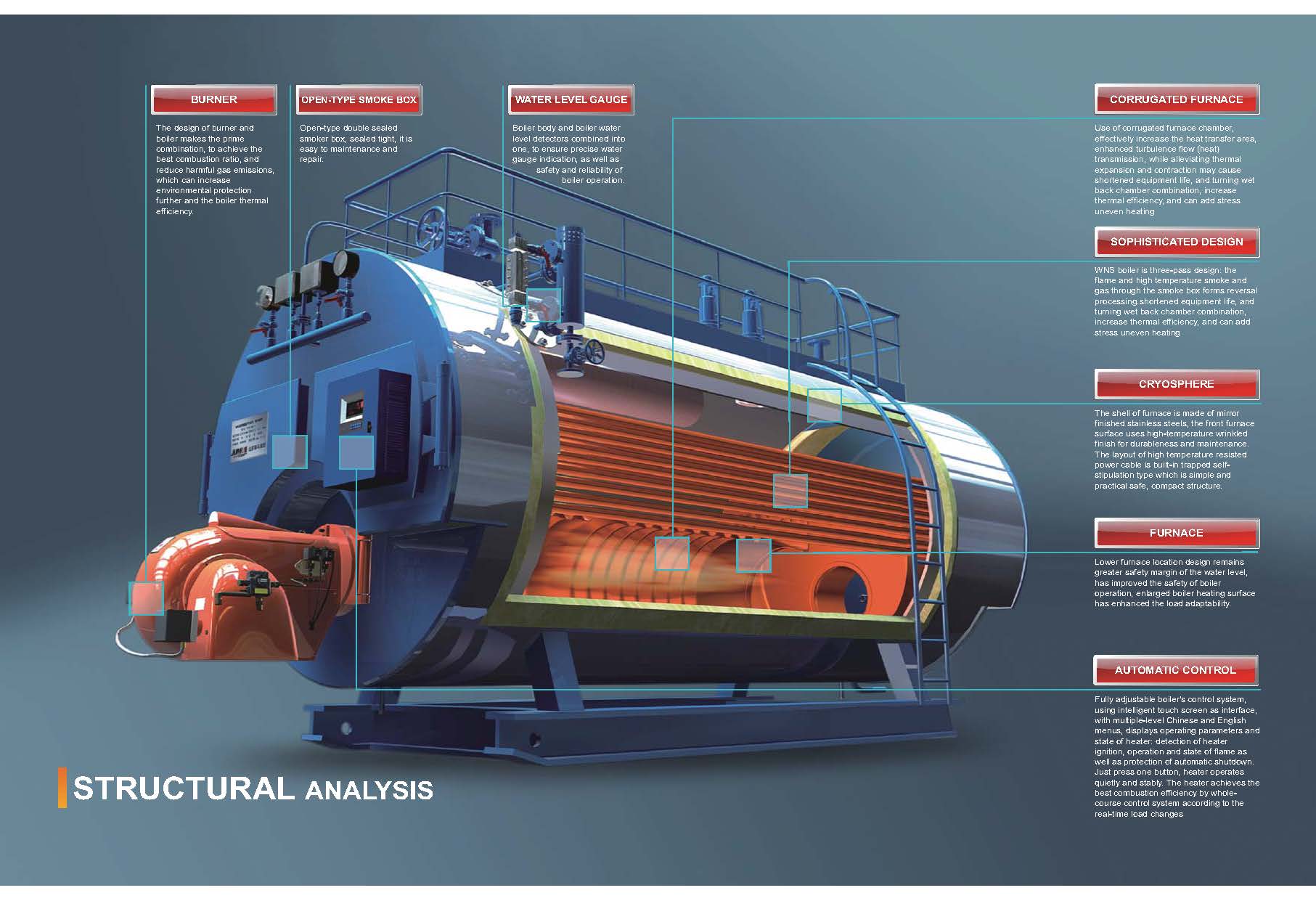
What Are the Routine Maintenance, Inspection, and Repair Costs for Oil-Fired Boilers?
An oil-fired boiler system is a significant investment—and like any high-performance machine, it must be properly maintained to operate safely, efficiently, and economically. Routine maintenance, inspections, and occasional repairs are essential for preventing breakdowns, extending equipment life, and minimizing fuel waste. While these costs are often smaller than fuel expenses, they can still add up over time, especially if unexpected repairs occur or maintenance is neglected. Understanding the typical costs and service intervals helps operators plan realistic annual budgets and avoid costly surprises.
Routine maintenance, inspection, and repair costs for oil-fired boilers typically range from $500 to $2,000 annually for residential/light commercial units, and from $5,000 to $25,000 or more per year for larger industrial systems. These costs cover scheduled servicing, inspections, parts replacement, cleaning, water treatment, and emergency repairs. Costs vary based on boiler size, duty cycle, fuel quality, regulatory requirements, and the use of service contracts. Preventive maintenance helps reduce repair frequency and improves reliability—protecting both operational uptime and long-term asset value.
Boiler maintenance is not just a technical task—it’s a financial safeguard.
Routine maintenance reduces the risk of costly breakdowns and helps ensure long-term reliability of oil-fired boilers.True
Scheduled inspections and cleaning prevent buildup, wear, and system failures that could lead to expensive emergency repairs.
🧰 Typical Maintenance Tasks and Frequency
| Maintenance Task | Frequency | Description |
|---|---|---|
| Burner Inspection & Cleaning | Quarterly to annually | Clean nozzle, adjust flame pattern, check ignition |
| Flue and Stack Cleaning | Annually or biannually | Remove soot buildup to restore draft and efficiency |
| Fuel Filter Replacement | Every 3–6 months | Prevent clogging and burner malfunction |
| Pump & Motor Lubrication | Every 3 months | Reduce wear on circulating and fuel transfer pumps |
| Water Treatment Check | Weekly or daily | Prevent scaling and corrosion |
| Boiler Blowdown | Daily to weekly | Remove impurities and control TDS in water |
| Safety Valve Testing | Annually | Ensure overpressure protection system functions properly |
| Combustion Analysis | Semiannually to annually | Measure O₂, CO, and flue gas temp for tuning |
| Gasket & Seal Checks | Every service cycle | Prevent fuel and flue leaks |
| Instrumentation Calibration | Annually | Maintain accuracy of temperature and pressure readings |
Failing to regularly clean burners and flue passages can increase fuel consumption and reduce safety.True
Soot buildup and poor flame control cause incomplete combustion and can lead to dangerous operating conditions.
💰 Typical Annual Maintenance and Repair Cost Ranges
| Boiler Type | System Size | Annual Maintenance Budget (USD) |
|---|---|---|
| Residential Oil Boiler | 80,000–150,000 BTU/hr | $400 – $800 |
| Small Commercial System | 250,000–500,000 BTU/hr | $800 – $2,000 |
| Industrial Unit (1–3 TPH) | 1–3 TPH (~700–2,000 kW) | $5,000 – $12,000 |
| Large Industrial (>5 TPH) | 5–20 TPH | $10,000 – $25,000+ |
These estimates include parts, labor, testing, cleaning materials, and consumables (like filters and chemicals).
📉 Cost of Delayed or Inadequate Maintenance
| Issue | Cause | Potential Repair Cost |
|---|---|---|
| Burner Failure | Dirty nozzle or pump | $1,000 – $3,000 |
| Tube Fouling/Replacement | Water scaling or soot buildup | $2,000 – $15,000+ |
| Flue Blockage | Lack of chimney/stack cleaning | $500 – $2,000 |
| Pump Failure | Seal or motor degradation | $1,200 – $5,000 |
| Control Panel Fault | Sensor calibration drift or short | $1,000 – $8,000 |
Neglected maintenance can lead to emergency shutdowns, compliance violations, and even boiler explosions in extreme cases.
Proactive maintenance is more cost-effective than reactive repair in oil-fired boiler systems.True
Preventive upkeep reduces total lifecycle costs by minimizing downtime and avoiding emergency service rates.
📋 Inspection and Compliance Costs
| Type of Inspection | Required For | Estimated Cost (USD) |
|---|---|---|
| Annual Safety Inspection | Pressure vessel certification | $500 – $2,000 |
| Combustion Tuning Report | Emissions compliance (NOₓ, CO) | $300 – $1,500 |
| Insurance Boiler Inspection | Required for coverage renewal | $200 – $800 |
| Stack Emissions Monitoring | Regulated operations (>2 TPH) | $500 – $3,000 annually |
Some regions require quarterly or semi-annual testing, especially for larger units or those in emission-controlled zones.
🧪 Case Study: Maintenance Contract vs. Ad Hoc Repairs
A hospital operated a 3 TPH oil-fired boiler for laundry and space heating.
Without Contract:
2 emergency burner repairs: $6,400
Pump replacement: $3,500
Stack blockage: $1,800
Total annual cost: $11,700
With Preventive Contract (Next Year):
Quarterly service visits
Burner tuning and flue cleaning
Pump inspection/lubrication
Annual cost: $7,400
Downtime reduced by 80%
Fuel efficiency improved 4.2%
The preventive plan resulted in $4,300 savings and higher system uptime.
Summary
Routine maintenance, inspection, and repairs are essential to the reliable, efficient operation of oil-fired boilers. These costs—though relatively modest compared to fuel expenses—can escalate quickly if ignored. From burner cleaning and water treatment to flue inspections and control calibration, each maintenance action adds years to the equipment’s life and reduces total operating cost. Investing in proactive service plans, skilled technicians, and performance monitoring not only ensures safety but protects the bottom line. In thermal systems, maintenance is not a cost—it’s an investment in uninterrupted performance.
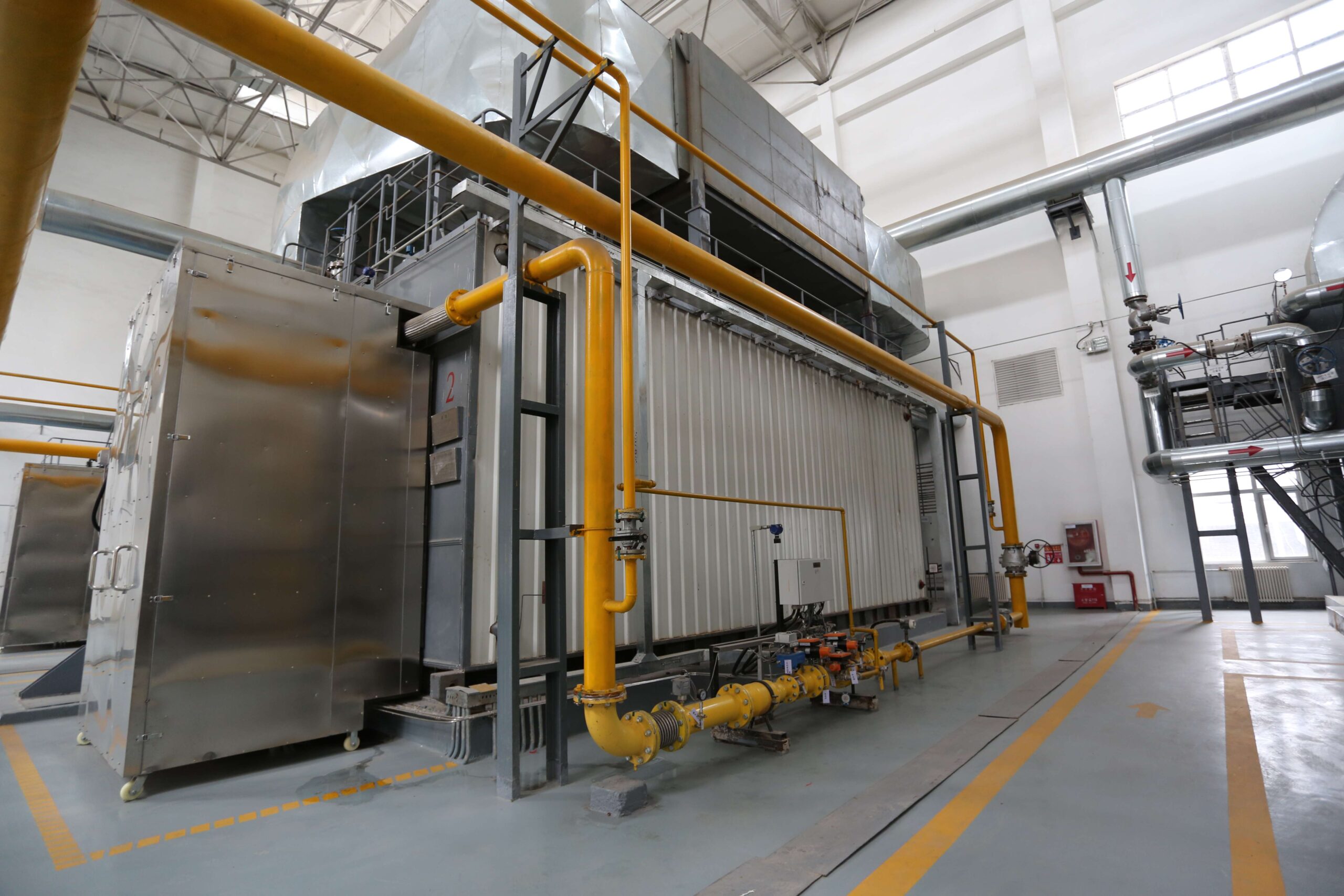
How Do Efficiency Losses, Aging Components, and Scaling Affect Lifecycle Costs?
An oil-fired boiler’s lifecycle cost is determined not just by how much it costs to purchase and install, but by how well it performs over 10, 15, or 20 years of operation. While the initial capital outlay is significant, most long-term expenses are operational—and many are driven by efficiency degradation, scaling, and wear and tear on aging components. Over time, even well-built systems suffer from combustion drift, heat transfer losses, and part fatigue. If these issues are not proactively addressed, they can lead to dramatically higher fuel usage, unplanned repairs, and premature system failure, all of which inflate total lifecycle costs.
Efficiency losses, aging components, and internal scaling significantly affect lifecycle costs by reducing heat transfer performance, increasing fuel consumption, accelerating maintenance needs, and shortening boiler lifespan. As efficiency drops, more fuel is required to produce the same thermal output, leading to higher annual operating costs. Worn-out burners, pumps, and control systems add downtime and repair costs, while scaling on water-side surfaces forces boilers to work harder, degrading both performance and reliability. These factors can increase lifecycle costs by 30–50% if left unmanaged.
In oil-fired systems, the slow, silent erosion of efficiency can cost more than any upfront price tag.
Efficiency degradation and internal scaling can significantly increase total operating costs over the lifecycle of an oil-fired boiler.True
Heat transfer losses force the boiler to burn more fuel, and aging parts increase repair frequency and system downtime.
📉 Efficiency Loss Over Time: The Hidden Cost Curve
| Boiler Age (Years) | Efficiency (%)* | Typical Efficiency Loss | Additional Fuel Cost Impact (%) |
|---|---|---|---|
| 1–3 | 85–88% | Baseline | 0% |
| 4–7 | 82–85% | –3% | +4–6% |
| 8–12 | 78–82% | –6–8% | +10–12% |
| 13–15 | 75–78% | –10%+ | +15–18% |
*Assuming no upgrades or deep maintenance. These losses are due to soot, burner drift, scaling, and part wear.
A 10% drop in boiler efficiency can increase fuel costs by over 15% annually.True
As less heat is transferred to water or steam, more fuel is required to achieve the same output.
🧱 Impact of Scaling on Heat Transfer and Costs
| Scale Thickness (mm) | Heat Transfer Loss (%) | Fuel Cost Increase (%) | Risk Level |
|---|---|---|---|
| 0.5 | ~3–5% | ~2–4% | Moderate |
| 1.0 | ~10–12% | ~6–8% | High (potential overheating) |
| 2.0+ | >20% | >12–15% | Critical (may cause tube rupture) |
Scaling forms from poor water treatment and high hardness levels, especially in older systems without automatic blowdown or softening systems.
Water-side scale buildup acts as an insulator, reducing thermal efficiency.True
Scale reduces heat transfer and forces the burner to operate longer and at higher loads to achieve the same output.
🔧 Aging Components: Rising Repair Frequency and Cost
| Component | Common Failure Mode | Typical Replacement Cost (USD) | Failure Impact |
|---|---|---|---|
| Burner Nozzle | Wear, clogging | $500 – $1,200 | Incomplete combustion, CO spikes |
| Circulating Pump | Motor burnout, seal leak | $1,200 – $3,000 | No water flow, shutdown |
| Pressure Sensors | Drift, calibration loss | $200 – $1,000 | Faulty control feedback |
| Combustion Fan | Bearing wear, imbalance | $1,500 – $4,000 | Poor air-fuel ratio, flame loss |
| Control Board/PLC | Electronics degradation | $2,000 – $8,000 | Full system shutdown, safety risk |
Aging components are not only costlier to maintain—they also reduce system safety and reliability.
🧪 Lifecycle Cost Case Study: 5 TPH Boiler
System Profile:
5 TPH oil-fired boiler
Operates 6,000 hours/year
Initial efficiency: 86%
Fuel price: $0.78/kg
Without Preventive Maintenance (After 10 Years):
Efficiency drops to 78%
Scaling present: 1 mm
Burner misfiring detected quarterly
Repairs average $6,000/year
Cumulative 10-Year Cost Difference:
| Cost Category | Maintained Boiler ($) | Unmaintained Boiler ($) | Difference |
|---|---|---|---|
| Fuel (10 years) | $13.8 million | $15.6 million | $1.8M ↑ |
| Repairs | $28,000 | $60,000 | $32K ↑ |
| Downtime Loss (est.) | $0 | $75,000 | $75K ↑ |
| Total Lifecycle Cost | $13.83M | $15.735M | $1.9M ↑ |
A 10% efficiency drop and sporadic repairs added nearly $2 million in avoidable costs over 10 years.
📋 Long-Term Maintenance and Upgrade Strategies
| Strategy | Cost Range (USD) | Lifecycle Benefit |
|---|---|---|
| Annual Deep Cleaning | $3,000 – $6,000 | Restores 2–6% efficiency |
| Water Treatment System Upgrade | $10,000 – $30,000 | Eliminates scaling risks |
| Burner Retrofit/Replacement | $8,000 – $25,000 | Improves combustion control |
| Efficiency Monitoring Installation | $2,000 – $10,000 | Enables proactive tuning |
| PLC/Control Upgrade | $5,000 – $20,000 | Improves system responsiveness and uptime |
Upgrading controls and cleaning scaled tubes can recover lost efficiency and lower operating costs.True
Efficiency-focused upgrades reduce fuel use and delay expensive boiler replacement.
Summary
Over a boiler’s lifespan, efficiency losses, internal scaling, and aging parts can quietly but significantly increase total operating costs. These issues force boilers to consume more fuel, fail more frequently, and perform less reliably—creating budget stress and operational risk. Regular descaling, burner tuning, component replacement, and water treatment are essential to avoid the compounding effects of deterioration. By maintaining peak thermal performance and component reliability, operators can preserve efficiency, extend system life, and reduce total lifecycle costs. In oil-fired systems, the cost of inaction is measured in fuel barrels, repair bills, and lost opportunity.
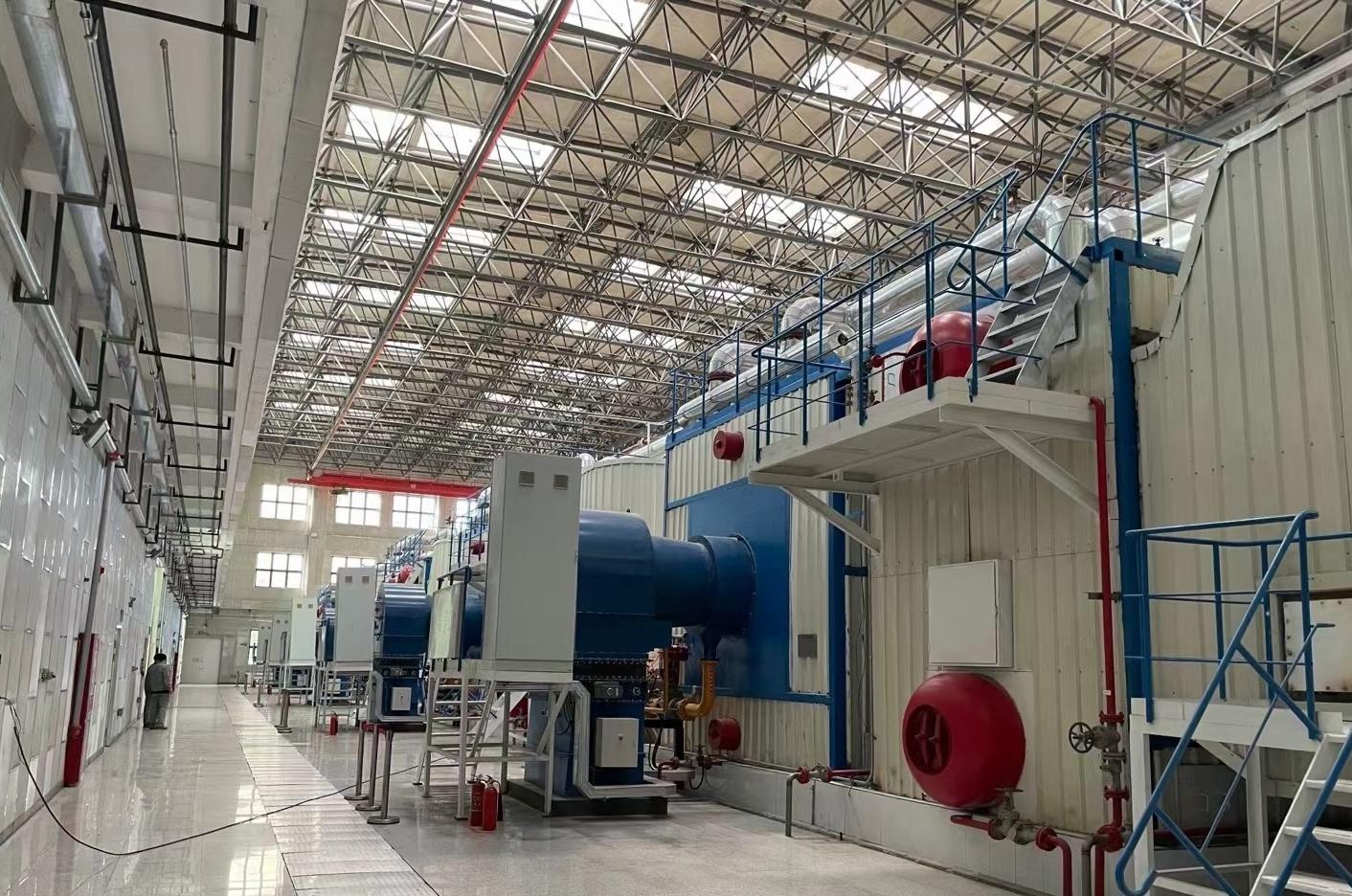
What Is the Estimated ROI or Payback Period for an Oil-Fired Boiler System?
When deciding to invest in an oil-fired boiler system, one of the most important financial questions is: how long will it take to recover the money spent through fuel savings and operational benefits? This is called the payback period. The return on investment (ROI) helps determine how much value the system brings compared to what was spent. These calculations are influenced by the cost of the system, how much fuel it saves every year, how often it’s used, and the price of oil.
The estimated payback period for an oil-fired boiler system is typically between 2 and 7 years. This depends on the cost of the boiler, how much fuel is saved each year, and how often the system is in operation. For larger systems or systems that operate continuously, the payback period is shorter—often between 2 to 4 years. Smaller or less-used systems might take 5 to 7 years. The return on investment improves when the boiler runs efficiently and fuel prices are high.
The faster your system pays itself off, the sooner you begin to benefit from real cost savings.
The payback period of an oil-fired boiler depends on annual fuel savings and system utilization.True
Higher utilization and improved efficiency yield quicker returns through reduced fuel costs.
💡 How to Understand Payback and ROI in Simple Terms
To estimate the payback period, divide the total cost of installing the boiler by how much money you save each year in fuel.
Simple Payback Formula:
Payback Period (in years) = Cost of the system ÷ Annual fuel savings
To estimate the ROI (Return on Investment), divide your annual fuel savings by the cost of the system and multiply by 100 to get a percentage.
Simple ROI Formula:
ROI (%) = (Annual fuel savings ÷ Cost of the system) × 100
📊 Example Scenarios
| Type of Installation | Installed Cost | Yearly Fuel Savings | Payback Period | ROI (%) |
|---|---|---|---|---|
| Small Commercial Building | $20,000 | $3,000 | 6.7 years | 15% |
| Medium Industrial (3 TPH) | $120,000 | $25,000 | 4.8 years | 20.8% |
| High-Efficiency Industrial | $200,000 | $60,000 | 3.3 years | 30% |
| Retrofit with Economizer | $40,000 | $14,000 | 2.9 years | 35% |
Larger systems that run more often usually have faster payback and higher ROI.
🛠️ What Helps You Get Faster Payback?
| Factor | How It Helps |
|---|---|
| Using the boiler many hours | More fuel saved = more money saved |
| High-efficiency equipment | Less fuel used = lower running cost |
| Burner with 10:1 turndown ratio | Adjusts better to changing loads |
| Adding a heat recovery system | Reuses waste heat to save even more fuel |
| Fuel price is high | Each liter of saved fuel is worth more |
Adding a flue gas economizer significantly improves boiler payback by reducing stack heat loss.True
Economizers recover waste heat to preheat feedwater or air, directly reducing fuel consumption.
🧪 Case Study: 5 TPH Boiler Upgrade
Before Upgrade:
Efficiency: 78%
Annual Fuel Cost: $1,320,000
After Installing New Boiler (85% efficiency + economizer):
Annual Fuel Cost: $1,210,000
Annual Savings: $110,000
Cost of New System: $320,000
Payback Period:
$320,000 ÷ $110,000 = 2.9 years
ROI:
($110,000 ÷ $320,000) × 100 = 34%
This means the system pays itself back in under 3 years and delivers strong financial benefits afterward.
Summary
The payback period and ROI of an oil-fired boiler system help you understand when your investment starts saving money. Most systems recover their cost in 2 to 7 years, depending on usage, fuel efficiency, and oil prices. High-efficiency systems and those used continuously deliver the fastest return. With smart design, good controls, and proper maintenance, your oil-fired boiler can be a high-value asset that pays for itself—and then pays you back.
🔍 Conclusion
An industrial oil-fired boiler represents a significant long-term investment, where the initial purchase price is just the beginning. Operational efficiency, fuel pricing trends, maintenance strategy, and equipment lifespan all play major roles in the total cost of ownership. A well-chosen, high-efficiency boiler—backed by a reliable maintenance plan—can yield substantial long-term savings and performance stability. Always compare total lifecycle costs, not just upfront figures, when making procurement decisions.
📞 Contact Us
💡 Need help evaluating the total cost of a new oil-fired boiler? Our team offers cost modeling, fuel consumption analysis, and ROI forecasting to guide your investment.
🔹 Talk to us today and ensure your oil-fired boiler investment delivers long-term value and performance! 🛢️💰📈
FAQ
What is the average upfront cost of an industrial oil-fired boiler?
The upfront cost typically ranges from $30,000 to $250,000 depending on the boiler’s capacity (TPH or BTU/hr), pressure rating, automation level, and compliance features (e.g., low-NOx). Installation can add $10,000–$100,000, covering piping, controls, and safety systems.
What are the long-term fuel costs for oil-fired boilers?
Fuel accounts for the majority of ongoing expenses. With heating oil prices averaging $3–$4 per gallon, a mid-sized industrial boiler consuming 1,000–3,000 gallons per day can incur $1M+ annually in fuel costs, depending on efficiency and load.
How much does maintenance cost over the boiler’s lifetime?
Annual maintenance—including inspections, burner tuning, tube cleaning, and parts replacement—typically costs 2–5% of the boiler’s capital cost per year. Over a 20-year lifespan, this can total $30,000–$150,000 or more.
Are there hidden or indirect costs to consider?
Yes. Indirect costs include:
Downtime and lost productivity during maintenance or failure
Emissions compliance upgrades (e.g., SCR or low-NOx retrofits)
Insurance and permitting fees
Operator training and certifications
How do oil-fired boilers compare with other fuel types in total cost of ownership (TCO)?
Oil-fired boilers have higher fuel costs and moderate maintenance needs, but benefit from reliable heat output and ease of installation. Compared to gas or biomass systems, they generally offer lower upfront cost but higher lifecycle fuel expense. TCO must weigh fuel availability, emissions regulations, and efficiency upgrades.
References
Boiler Cost Estimation Guide – https://www.energy.gov
Fuel Oil Pricing Trends and Projections – https://www.eia.gov
Industrial Boiler Installation and Maintenance Costs – https://www.sciencedirect.com
Oil-Fired Boiler Lifecycle Economics – https://www.researchgate.net
Heating Oil Market Analysis – https://www.bloomberg.com
Maintenance Best Practices for Oil Boilers – https://www.epa.gov
Boiler Efficiency and Total Cost of Ownership – https://www.bioenergyconsult.com
Industrial Boiler Emissions Compliance Costs – https://www.mdpi.com
Long-Term Boiler Operation Planning – https://www.iea.org
Boiler Fuel Comparison and TCO Analysis – https://www.energysavingtrust.org.uk

